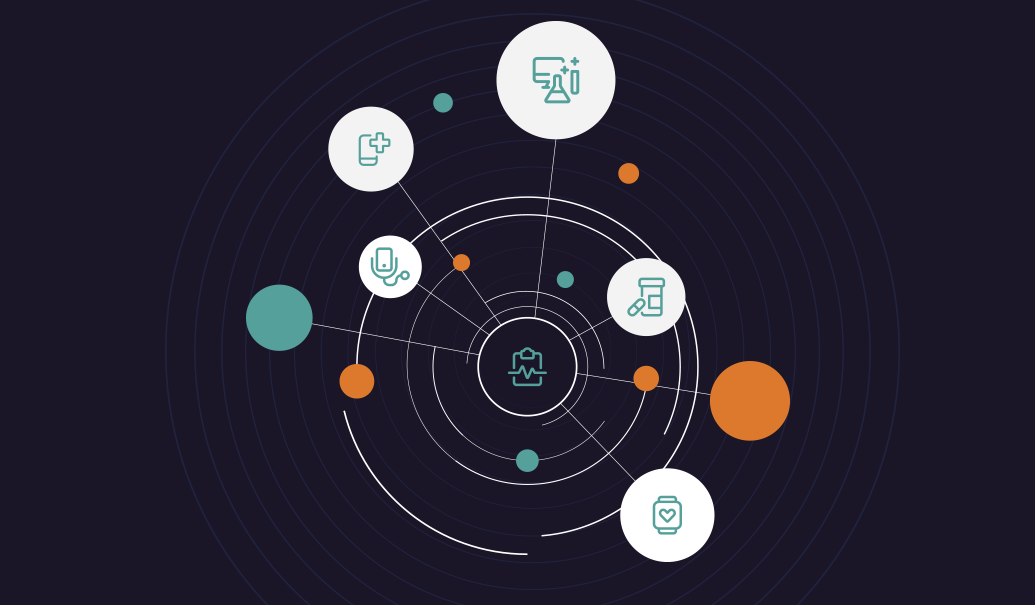Reading this year’s headlines on the outlook for digital health and healthtech, one could easily conclude that the sector has hit a dead end.
A good decade has passed since digital health migrated from the Health IT backwaters to digital therapeutics blue oceans, as illustrated by prescription digital therapeutics (PDTs) establishing themselves as a new distribution and commercialization vehicle for digital health innovation. During the 2010s, momentum grew as the U.S. Food and Drug Administration clarified software as a medical device (SaMD) regulations—just in time for the crescendo of the COVID-19 pandemic to fuel unprecedented adoption of virtual care products and services.
Finally, we all agreed, the industry had moved beyond the electronic medical record (EMR).
Alas, investment cooled significantly in 2022, followed by the recent one-two-punch of Silicon Valley Bank collapsing and Pear Therapeutics filing for bankruptcy. If one of the lighthouse companies in digital therapeutics could fall from such heights, was anyone safe?
While these events are the result of many unrelated factors, the inevitable conflation has created a “wake up” moment for the digital health sector. It’s the industry’s most significant learning milestone to date.
But if the era of “easy money” is firmly behind us, then what comes next? Let’s start by getting one thing out of the way: This is good news. To understand why, let’s take stock of the past ten years in digital health:
- Significant funding has fueled massive fragmentation. Most digital health offerings were never going to be adopted. The industry inundated healthcare organizations with an excess of innovations, most of which lacked solid evidence of effectiveness. This was bad for everyone.
- Digital transformation of this magnitude takes decades. Even proven protocols with robust evidence to justify them can take up to 15 years for the healthcare community to adopt. It’s still early days.
- Funding for digital health has come in waves. Payers led the first wave, followed by the investor community. Most recently, pharma has waded in. Future waves undoubtedly will come from different parts of the healthcare and technology ecosystems.
- SaMD is much more than PDTs. Traditionally, SaMDs have been considered part of standalone or digital-only innovations, with strict requirements for prescribing. In reality, SaMD should be thought of as a general vehicle for raising the bar for digital health and connected device components that demonstrate an intended clinical use and outcome.
- The world around us has evolved. From privacy and transparency to inequality, the human condition has become a central topic of discussion—and, with it, greater accountability for technology companies. There’s a reason we now talk in terms of a Quintuple Aim.
It’s time to build on the lessons of the last decade, including the unprecedented pressure test of the pandemic. Conditions have never been riper for decisive action.
So, what’s the savvy digital health leader to do? Leaders of healthtech startups, large pharma, medtech and diversified health services companies can take five tangible actions to position their companies for sustained competitive advantage in digital health:
- Manage cash burn with relentless focus on the core ingredients
- Optimize value capture with progressive regulatory pathways
- Lead with integrated evidence programs to prove value across stakeholder categories
- Rethink partnerships in terms of the “who” and the “how”
- Commercialize with agility of business models and markets
Manage the healthtech cash burn with core ingredient focus
Up until now, many healthtech companies have had the funding capacity to manage their entire offerings from top to bottom. This is logical, since many nonhealthcare technology companies have succeeded by building high-performance teams that “do it all.” This stance, however, is out of step with the way things work in healthcare, a team sport with a lot of referees.
Innovators should start by focusing not only on unmet user and customer needs but also by pinpointing the existing care pathways and protocols used today. A deep understanding of the health economics of those care pathways is imperative to identifying what an offering’s “core ingredients” should be. Whether it’s an algorithm, interface, telehealth service or even data set, these core ingredients are all that’s worth investing in. Everything else should be relegated to partners, platforms and vendors, where negotiation leverage is currently favorable, given the macro-environment.
The advantages of this focus on core ingredients include the following:
- Innovators are forced to engage external players who really matter.
- Consolidation of digital health offerings is “by design.”
- Innovation teams are liberated from commoditized capabilities.
- Funding justification to investors is easier to manage.
- Bad ideas are killed early and often.
- Cash burn can be reduced significantly.
Optimize value capture for healthtech solutions with progressive regulatory pathways
The concepts of “time to market” and “regulation” have never been on friendly terms. While there’s not a lot of evidence showing that SaMD products have higher rates of successful adoption and commercialization, there is every reason to believe that they are poised to drive growth going forward. This is because:
- Regulatory clarity is making SaMD product development—whether new or transitioned from non-SaMD—more predictable and desirable for both manufacturers and customers.
- With more data being “liberated” and technology growing less expensive and more widespread, AI is poised to transform healthcare evolution and growth. A large portion of AI-powered digital health solutions will require SaMD designation, per FDA guidelines.
- SaMD allows manufacturers to improve patient lives in new ways, by moving from improving wellness to treating disease by increasingly personalized means.
- Some markets—including Germany, which often serves as an EU bellwether—have created reimbursement pathways that predetermine regulatory clearances.
- Evidence requirements and customer expectations—including for regulatory clearance—continue to rise. The reward of gaining SaMD designation makes building robust evidence even more worth it.
The shift from wellness to clinical in digital health, especially with AI-powered products, is slated to grow the SaMD market to more than $5 billion (from just over $1 billion) in the next 10 years. With the public release of platforms such as GPT-4 from OpenAI, that projection is probably conservative. The bottom line is digital health leaders will increasingly transition solutions to using SaMD components to stay competitive.
Healthtech must lead with integrated evidence programs
Asserting that companies should “lead with evidence” may seem obvious. However, this imperative is often in conflict with managing the cash burn and therefore bears repeating. Traditional and sequential evidence generation processes can be prohibitively expensive and severely limit a company’s growth potential. However, insufficient evidence leads to poor go-to-market results and changes of regulatory clearance, which can render business cases nonviable.
Whether or not innovators decide to include SaMD components in their products, developing an integrated evidence-generation program is essential and should include:
- A pre-randomized clinical trial (RCT) evidence strategy
- Evidence planning and partnership development as part of product strategy
- Stacked study designs with simultaneous collection of clinical, operational and economic data
- Integration with third-party data sources for retrospective and prospective studies
- Novel channels for patient identification, activation and recruitment
- Early-adopter customers who become co-creators and evidence-generation partners
This integrated approach can ensure continuous learning and customer development happen simultaneously, taking advantage of real-world data and connected research environments. While sophisticated partnerships and compliance management are required, the benefits are compelling, including:
- Fewer studies
- Shorter timelines
- Evidence outputs generated for multiple stakeholders
- Potential customers and early adopters as a byproduct
Collecting clinical and economic benefits data as early as possible is crucial because it enables a product’s value story to quickly inform and influence provider and payer adoption and reimbursement decisions. By prioritizing integrated evidence generation and incorporating it into a product’s development process, companies can build a compelling value proposition and secure a competitive advantage in the marketplace.
Rethink the ‘who’ and ‘how’ of digital health partnerships
Partnerships have been a core part of digital health’s history, and they will continue to be a driving force for innovation and investment, especially between pharma and healthtech. Unfortunately, the landscape is littered with partnerships that have failed to reach the market or find customers.
Differences in culture, operating models and expectations can all play a role in these failures. However, the biggest challenge these partnerships face is due to misaligned incentives and poor partnership structures. As digital health efforts move forward, those considering going to market with a partner (or partners) must consider:
- Identifying partnerships, beyond the obvious, based on health economics
- Going beyond bilateral partnerships to include additional stakeholders
- Ensuring partnerships agree on shared problems, not just shared solutions
- Investing in partner ecosystems that can co-create, validate and scale
- Agreeing on terms that create intrinsic shared risk and shared upside from the start
Preconceived ideas—such as that “pharma companies have the science, funding and commercial scale,” “healthtech has the agility and drive” or “payers are always late adopters”—should be treated with skepticism. These assumptions are often irrelevant if a partnership fails to address health economics for multiple stakeholders. Like everything else in digital health, partnerships should follow an agile and progressive life cycle, which allows them to “fail fast" and evolve with stage gates.
Embrace commercial agility by exploring novel digital health models and markets
Getting the health economics right is a recurring theme for successful digital health and one that deserves repeating. Naturally, health economics matter most when it comes to commercializing digital health solutions, and the last decade of trial and error shows this to be the trickiest stage to get right.
There are many reasons for this, including patchy or nonexistent reimbursement in many markets, overreliance on inconclusive or incomplete evidence packages and failure to connect solutions with outcomes in value-based care arrangements. But there are also bright spots, including:
- Direct-to-consumer models with ground-up brand building and marketing
- Durable medical equipment vs. PDT reimbursement models leveraging connected devices
- Statutory reimbursement pathways, especially in the EU
- Remote patient monitoring and virtual care reimbursement, especially in the U.S.
- Value-based care and benefit-coverage arrangements, especially in the U.S.
The healthtech companies that have experienced the most success commercializing their products are those that have not limited their growth journey to just one business model or market. Successful scaling demands operating in different markets and with models that evolve over time. Market conditions change quickly—think of coding for remote therapy monitoring in the U.S., for example—so agility will be critical in the years to come.
For healthtech less is not more, but it is better
The future of healthcare is digital, and it will be so in ways that no one can predict. Nonetheless, harvesting the last decade’s worth of learnings will give healthtech companies, even struggling ones, the best platform for success.
The healthcare ecosystem doesn’t need more products and solutions. Innovations can and should be revisited, repackaged and redeployed—this time around, with more thoughtful evidence, commercial model strategies, partnerships, regulatory progression and a relentless focus on only providing value through “core ingredients.”
An austere environment might be the best (digital) medicine of all.
Add insights to your inbox
We’ll send you content you’ll want to read – and put to use.















